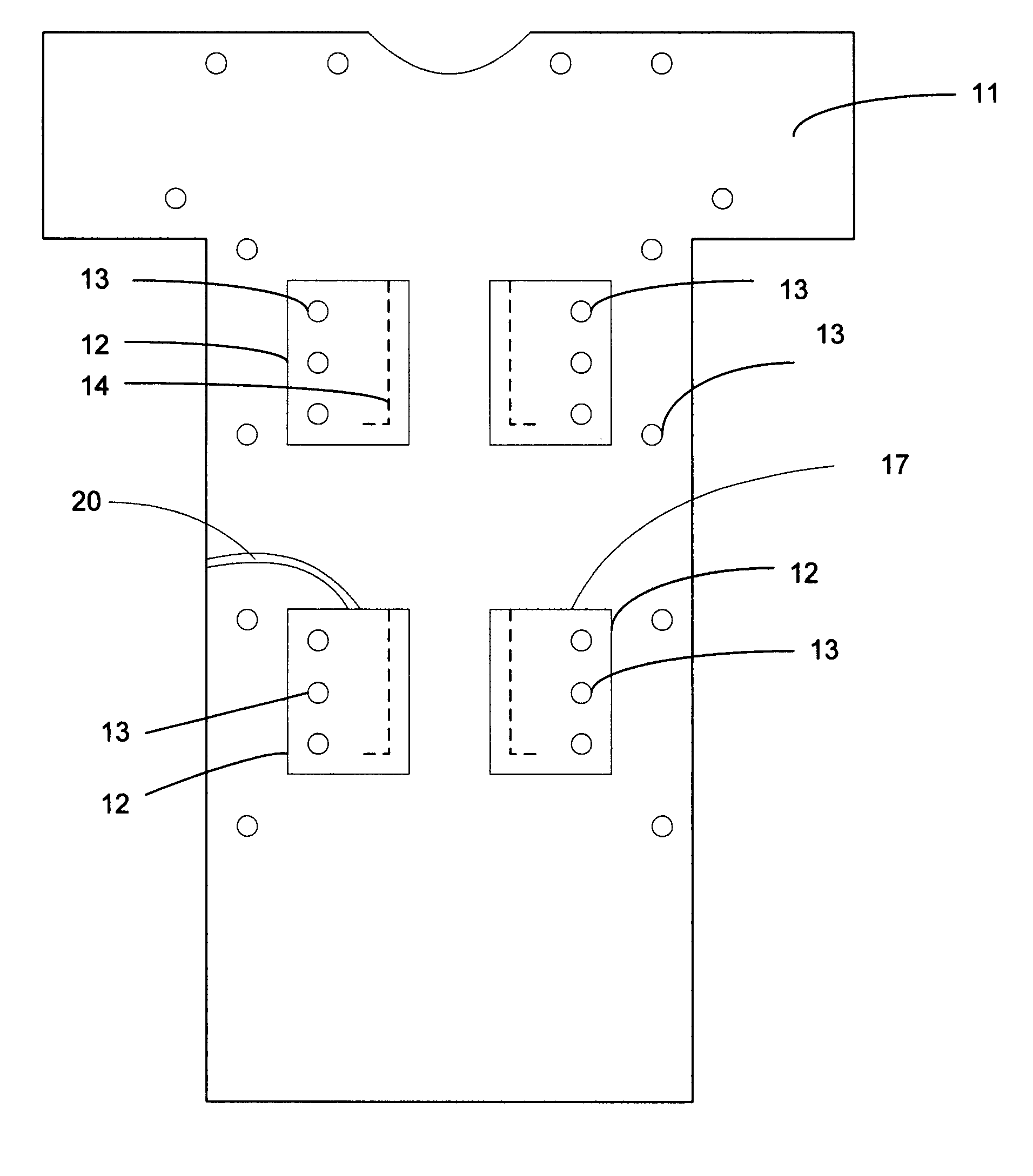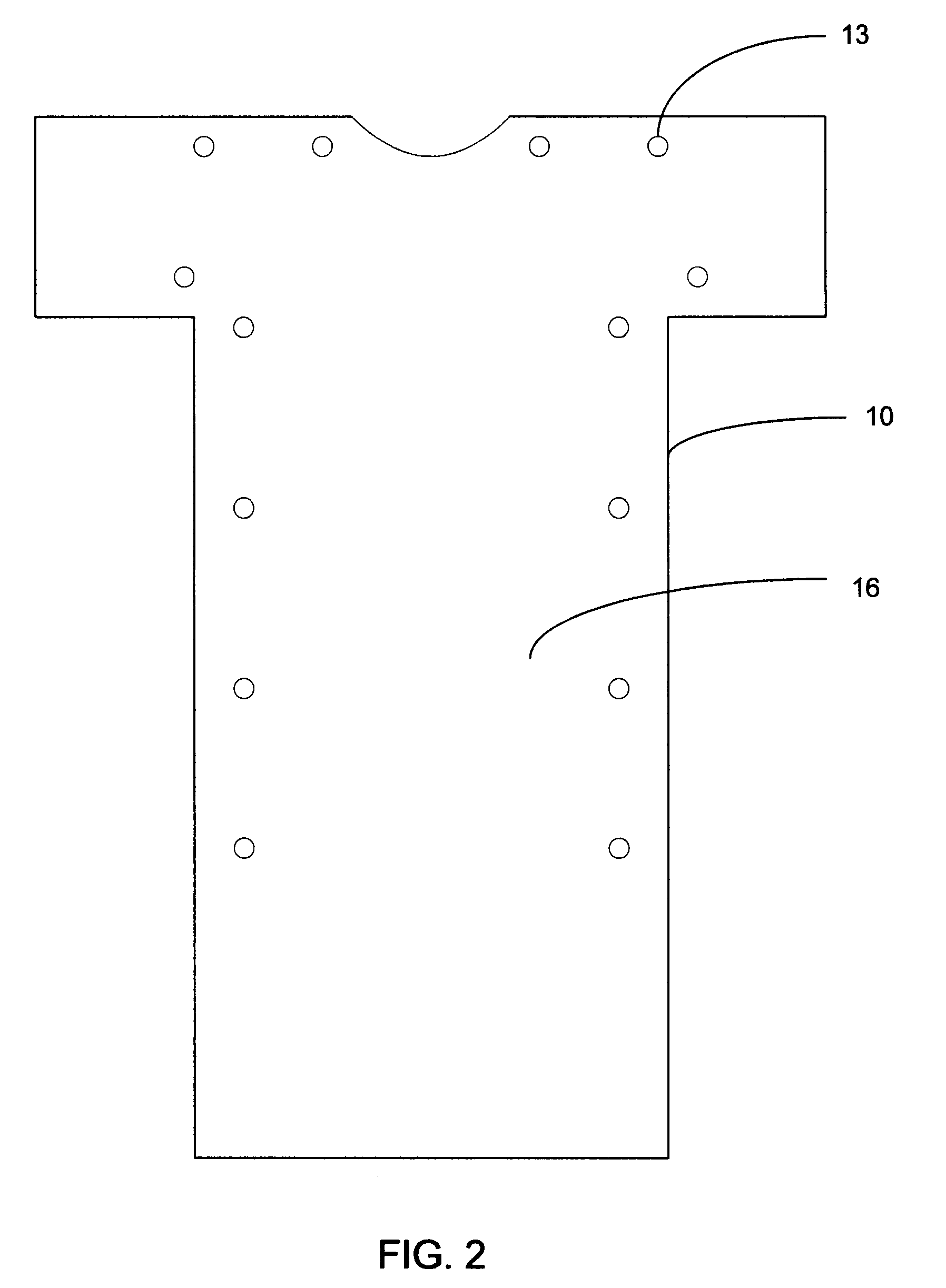Post surgical drain facilitator gown
a technology of facilitator gown and post-operative gown, which is applied in the direction of protective garment, collar, insole, etc., can solve the problems of drain loosening or coming undone, drain becoming heavier and harder to secure to a standard hospital gown, and drain becoming loos
- Summary
- Abstract
- Description
- Claims
- Application Information
AI Technical Summary
Benefits of technology
Problems solved by technology
Method used
Image
Examples
Embodiment Construction
[0023]The accompanying drawings are referenced in conjunction with the detailed description so that the present invention may be more readily understood. The present invention provides a user wearable garment 10 capable of securing and storing drainage reservoirs for a post operative wearer.
[0024]The garment 10 comprises a fabric sheet with a front side 11 and a back side 16, a head opening and two arm openings. The body of the garment is large enough to loosely fit around a torso region of a wearer's body and extend to about the knee region of the wearer's body. The garment 10 is detachably coupled around the wearer's body so that the wearer may easily put on and remove the garment.
[0025]The pocket cloths 12 are attached to the fabric at locations close to or covering apertures 15 in the fabric of the gown. The apertures 15 are within a range of 0 cm to 15 cm and are large enough to receive drainage tubing approximately 1 cm thick and a drainage reservoir bulb approximately 10 cm i...
PUM
 Login to View More
Login to View More Abstract
Description
Claims
Application Information
 Login to View More
Login to View More - R&D
- Intellectual Property
- Life Sciences
- Materials
- Tech Scout
- Unparalleled Data Quality
- Higher Quality Content
- 60% Fewer Hallucinations
Browse by: Latest US Patents, China's latest patents, Technical Efficacy Thesaurus, Application Domain, Technology Topic, Popular Technical Reports.
© 2025 PatSnap. All rights reserved.Legal|Privacy policy|Modern Slavery Act Transparency Statement|Sitemap|About US| Contact US: help@patsnap.com



